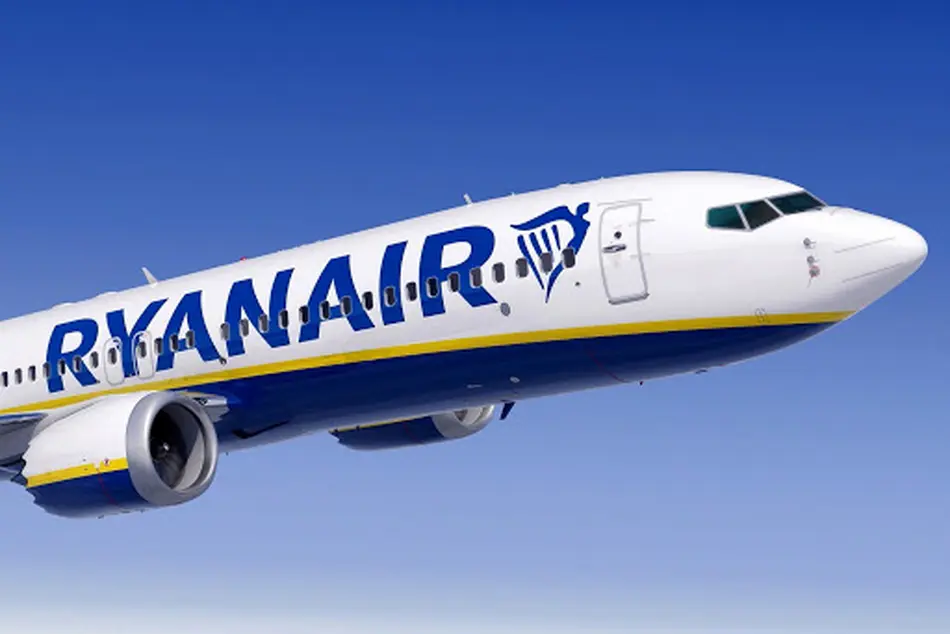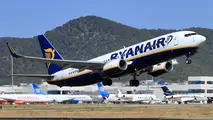Ryanair Sees Full Fleet Of Boeing 737-8-200s In Time For Summer Season
Ryanair says Boeing deliveries have been improving, and the last six Boeing 737-8-200s due from an order of 210 of the type should be delivered by January or February, leaving the airline with a full fleet for the 2026 summer season.

Ryanair says Boeing deliveries have been improving, and the last six Boeing 737-8-200s due from an order of 210 of the type should be delivered by January or February, leaving the airline with a full fleet for the 2026 summer season.
Reporting its second-quarter results on Nov. 3, the LCC said that during the first half of its fiscal 2026, which runs from April through September, Ryanair had taken delivery of 23 new 737 MAX aircraft.
Management also updated on Ryanair’s efforts to retrofit winglets to all 409 older 737-800s in its fleet. Approximately 60% now have the feature, leading to 1.5% lower fuel burn and 6% less noise. The entire 737NG fleet will be retrofitted by the end of 2026.
The airline added that Boeing’s improved deliveries had continued through the summer season and into October, allowing it to carry more passengers in the fiscal first half and selectively add capacity in the peak October school break, as well as for Christmas and New Year.
As of the end of October, Ryanair had 204 MAXs in its fleet of 641 aircraft. Group CEO Michael O’Leary said during the results presentation that he was confident the remaining 737-8-200s would arrive in time for next summer. The airline previously had to trim its growth forecasts because of Boeing delivery delays.
“We’ve got 204 ‘Gamechangers’ in the fleet at the end of October, and there are six left to deliver,” O’Leary said. “We expect to get two in November, and the remaining four will be delivered in January or February, which means that for the first time in many years we’ll have a full fleet complement by the time we switch to the summer schedule at the end of March next year, and I think that will facilitate strong traffic growth of 4% to about 215 million passengers in [fiscal] 2027.”
CFO Neil Sorahan said that Boeing continues to expect the certification of the 737-10 “somewhere toward the middle of 2026. There could be a little bit of slippage due to the government shutdown in the United States. But, importantly for us, they and we are very much planning on the basis that we’re going to receive our first 15 MAX 10s in the spring of 2027 in line with our contract.”
The group has 300 of the new MAX variant due to arrive by March 2034.
O’Leary said the group had started hedging dollar capital expenditure related to the MAX 10s it has on order, with firming delivery schedules and a lower dollar providing opportunities it was able to take advantage of. It has 35% of the capex for the first 150 firm orders hedged at an average €/$ rate of 1.24 and will hedge more if there are opportunities to do so at an advantageous rate, he said.
The airline is also preparing its workforce for the arrival of the 737-10s. It laid out plans to accelerate cadet and first officer recruitment over the next three years. “While this investment in training and growth [approximately $29 million per annum] will increase [first officer] crewing ratios for up to three years, it will provide a strong pool of homegrown [first officers] ready for promotion to captains when MAX 10 deliveries ramp-up in [fiscal 2029-30],” the group said.
Referring to recent moves in some European countries to either increase taxes on the aviation sector, or conversely to reduce them, the airline group said that for the winter, “We’ve allocated Ryanair’s scarce capacity to those regions and airports cutting aviation taxes and incentivizing traffic growth such as Sweden, Slovakia, Italy, Albania and Morocco by switching flights and routes away from high cost, uncompetitive markets like Germany, Austria and regional Spain.”
Ryanair said its fiscal second quarter profit after tax grew 20% year-over-year to €1.72 billion. For the fiscal first half, it rose 42% to €2.54 billion, helped by traffic growth, fare recovery and unfavorable comparisons in the prior year due to the timing of Easter.
Ryanair also said it expects the overall European short-haul market’s capacity to remain constrained until at least 2030, due to aircraft delays and engine problems. This should accelerate consolidation and lead to the withdrawal of unprofitable airlines in some markets, in the carrier’s view.
Traffic in the first six months of fiscal 2026 grew 3% to 119 million passengers, while revenue per passenger rose 9%, with average fares up 13% and ancillary revenues 3% higher.
The airline group said it now expects its full-year traffic to grow more than 3% to 207 million passengers, an increase from its previous forecast of 206 million, in fiscal 2026, which runs to March 31, 2026.
“Unit costs performed well in [the fiscal first half] and, as previously guided, we expect only modest [fiscal 2026] unit cost inflation as our [737-8-200] deliveries, fuel hedging and effective cost control across the group helps offset increased ATC [air traffic control] charges, higher environmental costs and the roll-off of last year’s modest delivery delay compensation,” O’Leary said.
The group’s forward bookings are slightly ahead compared to last year, but Ryanair noted that it faces more challenging fare comparisons in the second half, making fare growth “more challenging,” with third-quarter fare outcomes set to be determined by last-minute Christmas and New Year bookings, and no visibility for the fourth quarter, except that the group knows there will be no Easter benefit.
It was too early for meaningful profit guidance for the full financial year. But Ryanair said it “cautiously expects” to recover all of last year’s 7% full-year fare decline, “which should lead to reasonable net profit growth in [fiscal 2026]. The final [fiscal 2026] outcome remains exposed to adverse external developments, including conflict escalation in Ukraine and the Middle East, macro-economic shocks and any further impact of repeated European ATC strikes and mismanagement.”

